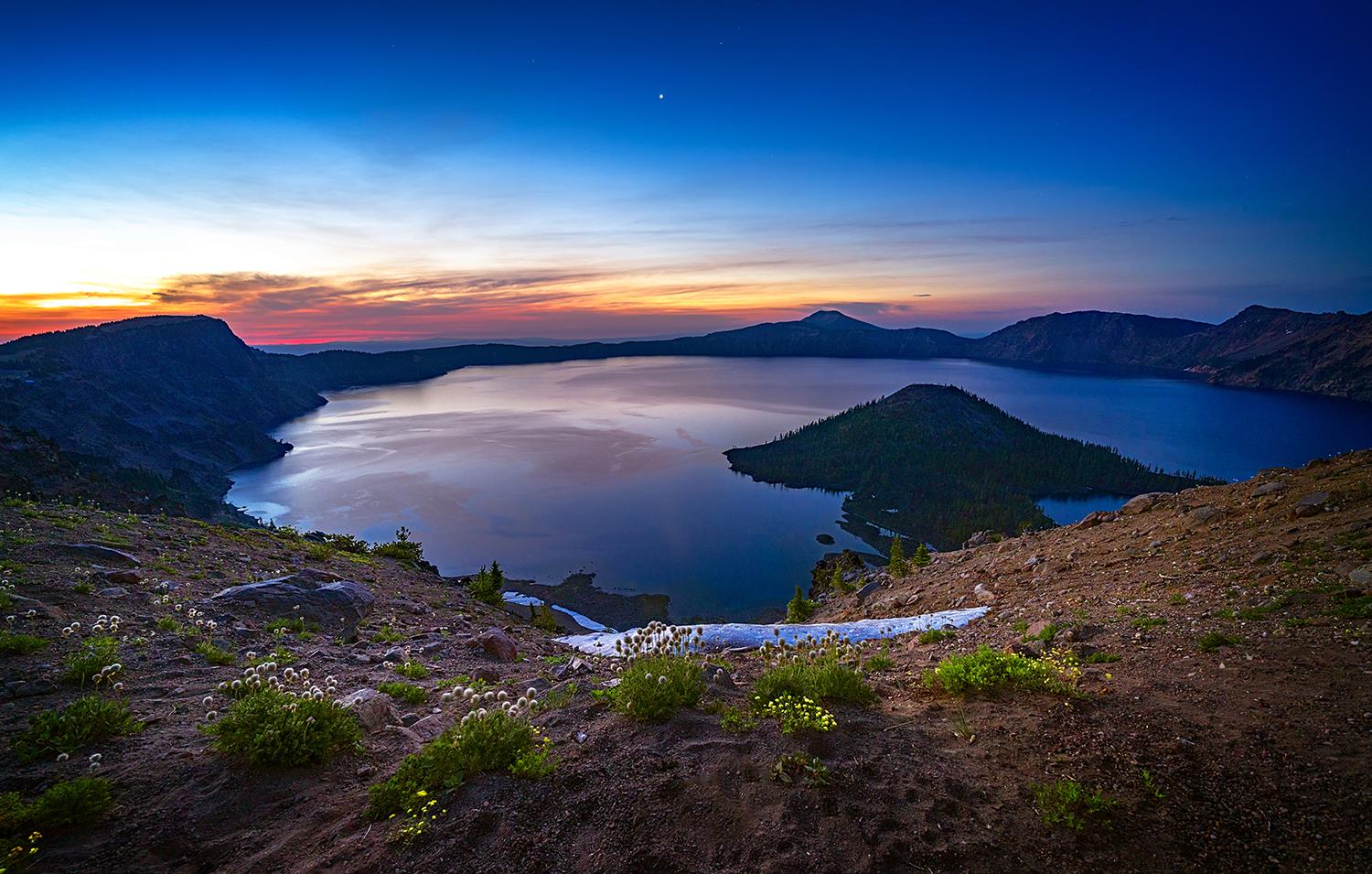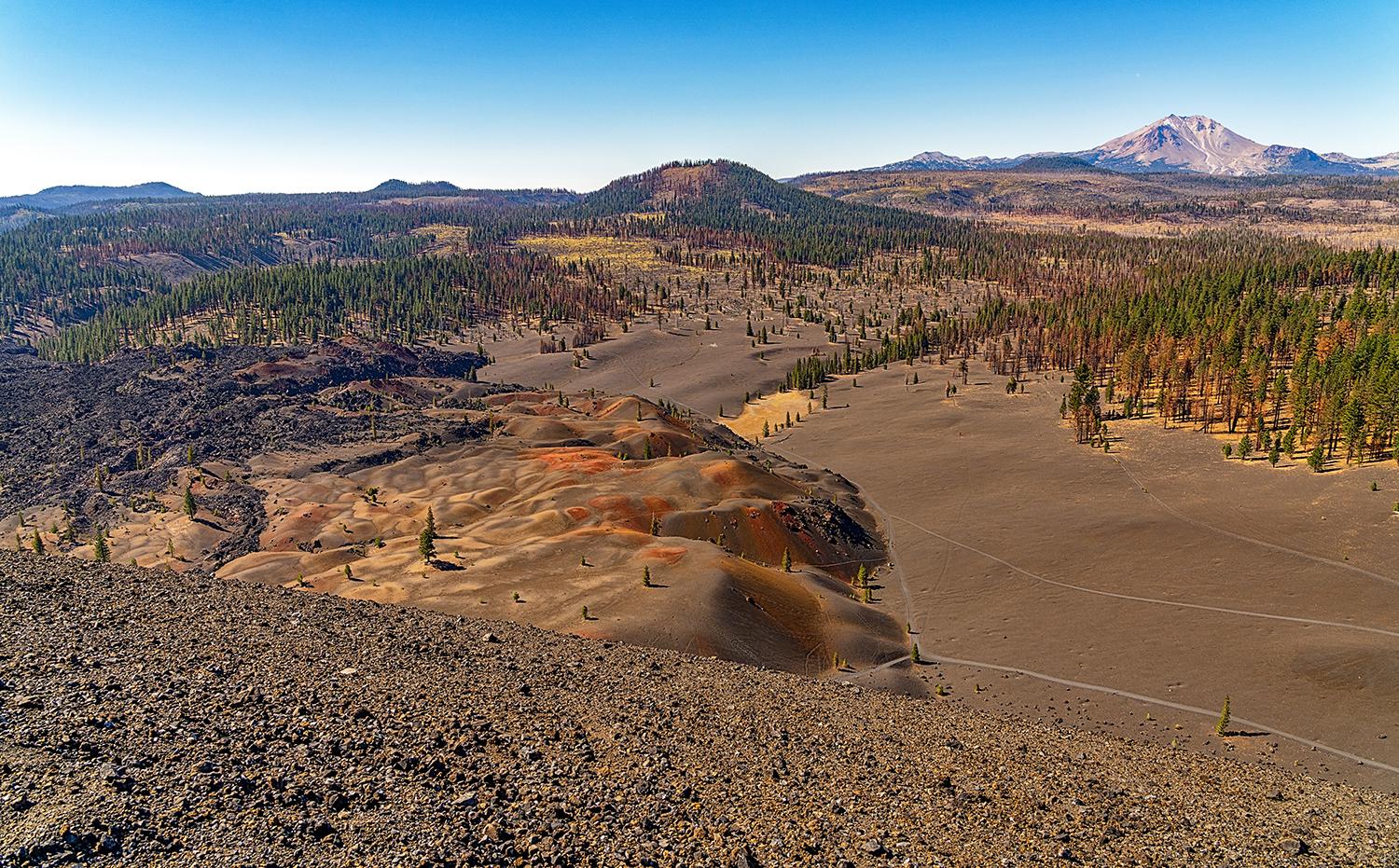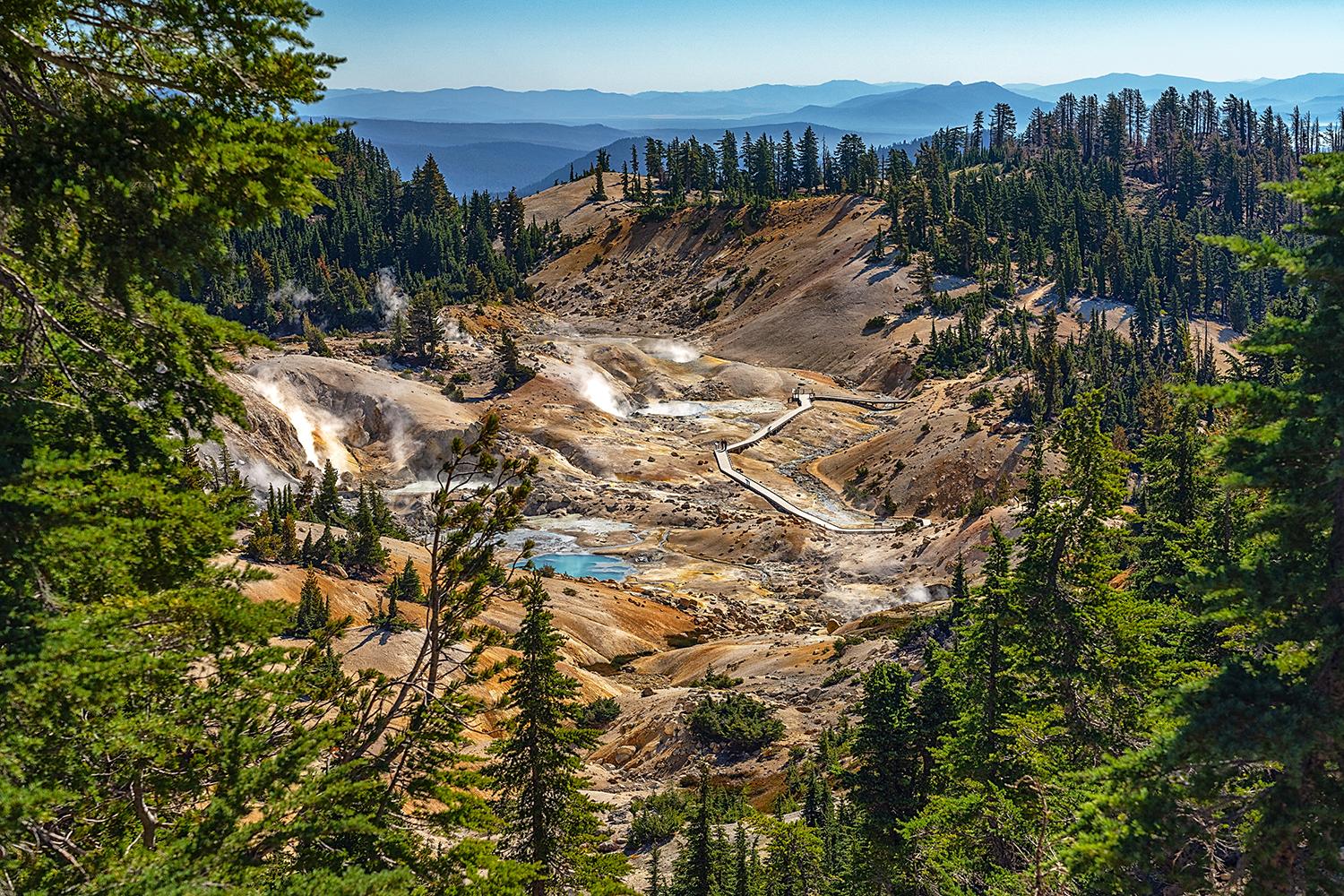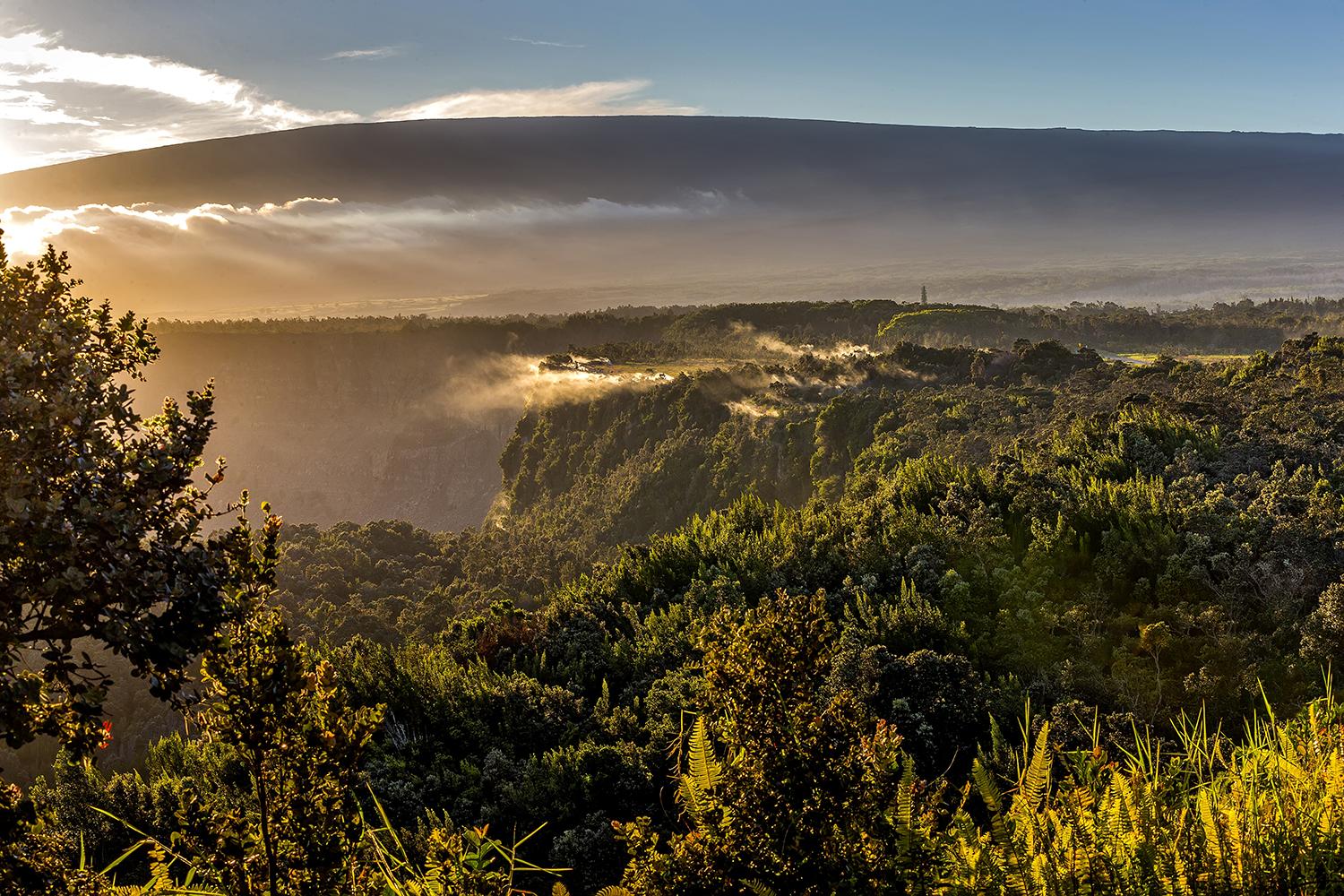
There's a 33-mile rim drive with 30 overlooks from which visitors can view this serene lake born of an explosive collapse some 7,700 years ago, Crater Lake National Park / Rebecca Latson
A Celebration Of Volcanoes
Words and images by Rebecca Latson
The National Geographic Society defines a volcano as “an opening in the Earth's crust through which lava, ash, and gases erupt.” Have you ever stopped to think about the number of National Park System units created around volcanoes and volcanic features? There are quite a few, actually, and in honor of these parks, the National Park Service is celebrating National Volcano Week (Feb 5 – 11, 2023). I’ve visited several of these volcanic park units, so in honor of National Volcano Week, I’d like to celebrate with photos of and facts about these wondrous landscapes birthed from Earth’s subsurface smithy.
Crater Lake National Park (Oregon)
Some 7,700 years ago, 12,000-foot-tall Mount Mazama blew its top and subsequently collapsed to form an almost-five-mile-wide crater (top photo) into which poured rain and snow to create a beautifully blue lake 1,943 feet deep. There’s a 33-mile road around the crater rim with 30 view areas. If you visit Crater Lake, make sure to spend a day just driving this rim road. Take your time and enjoy the views from sunrise to sunset to nighttime.
Lassen Volcanic National Park (California)

You can hike to the top of Cinder Cone for a 360-degree view of volcanic landscape at Lassen Volcanic National Park / Rebecca Latson
This national park hosts all four volcano types: shield (Prospect Peak), plug dome (Lassen Peak), cinder cone (Cinder Cone), and composite or stratovolcano (Brokeoff Volcano aka Mount Tehama). You can hike up these volcanoes for some awesome views of landscapes including ash dune fields and black blocky lava beds.

A view of Lassen Peak and volcanic landscape seen from atop Cinder Cone, Lassen Volcanic National Park / Rebecca Latson
Walk along the sidewalk next to Sulphur Works or hike to Bumpass Hell to experience the sight of mudpots, fumaroles, and boiling lakes clueing you in to the volcanic activity beneath your feet.

Bumpass Hell is a steamy reminder of the active volcanic plumbing beneath one's feet at Lassen Volcanic National Park / Rebecca Latson
Mount Rainier National Park (Washington)

Towering above the other mountain ranges at 14,410 feet, "The Mountain" is easily viewed from just about any hike you take in Mount Rainier National Park / Rebecca Latson
Known to the Native Americans as Tacoma or Tahoma, this 14,410-feet-tall, 500,000-year-old “episodically active” composite volcano is also the most glaciated peak in the contiguous United States with 25 major glaciers gracing “The Mountain’s” flanks. Its last eruption was approximately 1,000 years ago.
Hawai’i Volcanoes National Park (Hawaii)

Kīlauea's colors really begin to light up in the evening and through the night, Hawai'i Volcanoes National Park / Rebecca Latson
When we think of volcanoes, probably one of the first parks that comes to mind is Hawai’i Volcanoes National Park. Home to Pele, the Hawaiian volcano goddess, Kīlauea volcano is, like Mauna Loa, a shield volcano and first formed underwater about 280,000 years ago.
Like Lassen, this national park teems with active byproducts of volcanic activity. Wander the trails around Steaming Bluff and you’ll see, feel, and smell clouds of warm sulphur-scented steam emanating from ground vents.

Steaming Bluff and Mauna Loa at Hawai'i Volcanoes National Park / Rebecca Latson
Nearby Sulphur Banks is quite the olfactory experience as you follow the boardwalk around rocks coated with the bright yellow namesake mineral deposited by volcanic gasses and steam. Hike the Kīlauea Iki Trail through lush rainforest down to a solidified lava lake and try to imagine the hard rock upon which you now stand was once bright orange liquid fire. If you are lucky, you might even be present to view eruptive activity like that of the “fire hose,” a stream of lava issuing from a lava tube opening out onto the Pacific Ocean in 2017.

Explosive action at the Fire Hose, Hawai'i Volcanoes National Park / Rebecca Latson
Lake Clark National Park and Preserve (Alaska)

A steaming Iliamna, one of many Alaskan volcanoes and one of two volcanoes within Lake Clark National Park and Preserve / Rebecca Latson
Famous for pristine, mountainous landscape and brown bear viewing, Lake Clark National Park and Preserve is home to two volcanoes, one of which I photographed some years ago from my spot along the beach at Chinitna Bay during a photo tour (to see the bears). “Soaring 10,016 feet tall from nearby Cook Inlet in the Chigmit Mountains … Iliamna is a composite volcano comprised of andesite lava flows and pyroclastic rocks on a base of Jurrasic-era granite," notes the NPS.
Big Bend National Park (Texas)

The Chisos Mountains, a byproduct of a volcanic past in Big Bend National Park / Rebecca Latson
This national park is considered a “geologist’s paradise,” with rock strata exhibiting folding, faulting, uplift, and volcanism. Roam the trails and drive the roads in and around the Chisos Mountains and you are witnessing the results of volcanic eruptions 45 million years to 30 million years ago. Goat Mountain, Cerro Castellan, and Tuff Canyon are but a few of the volcanic features you’ll see along the Ross Maxwell Scenic Drive through Big Bend.

Cerro Castellan, "a volcanic vent with banded layers of red, orange, and white pyroclastic deposits," Big Bend National Park / Rebecca Latson
John Day Fossil Beds National Monument (Oregon)
Each of the three units within John Day Fossil Beds National Monument exhibits volcanic features, from lahars to columnar basalts to ash eruptions. One of the most obvious examples of an eruptive volcanic past is seen in the Clarno Unit known as the Palisades, created from lahars (mud, ash and debris flows) barreling down the flanks of a volcano (now eroded away), steamrolling through the forest to pick up everything in its path. This assemblage ultimately solidified to form cliffs within which you might spot fossilized forest remains embedded in the rock.

A path to the Palisades in the Clarno Unit, John Day Fossil Beds National Monument / Rebecca Latson
The southern entrance of the Sheep Rock Unit will greet you with the sheer magnitude of the Picture Gorge Basalts, created by 61 lava flows some 16 million years ago from fissures in the Earth’s crust.

The Picture Gorge Basalts at the southern entrance to the Sheep Rock Unit, John Day Fossil Beds National Monument / Rebecca Latson
Probably the most popular of the three units is the Painted Hills Unit. Those colorfully banded layers of red and yellow-green strata got their start over 30 million years ago from a series of volcanic eruptions depositing layers of ash that eventually transformed into clay colored by various minerals such as potassium, manganese, and iron.

Created from volcanic ash deposits millions of years ago, these colorful clay layers are indicators of past climate changes in the Painted Hills Unit, John Day Fossil Beds National Monument / Rebecca Latson
Yellowstone National Park (Montana, Wyoming, Idaho)

Evidence of volcanic activity wherever you look, Yellowstone National Park / Rebecca Latson
At a little more than 2 million acres in size, America’s first national park displays volcanic activity everywhere you look, from the hot springs, fumaroles, and geysers in geyser basins throughout the park to Sheepeater Cliff’s columnar basalts, to the layers of volcanic glass at Obsidian Cliff, to the solidified ash flow at Tuff Cliff, to an overall view of the Yellowstone Caldera at the Washburn Hot Springs Overlook. Small wonder this is one of the 25 most-visited parks within the National Park System. It’s definitely a favorite of mine.

Volcanic activity right beneath your feet at Upper Geyser Basin, Yellowstone National Park / Rebecca Latson
These volcanic parks listed here are but a fraction of the many volcanic units within the National Park System. Don’t wait until next year’s National Volcano Week to visit a volcanic park. Get started now. Oh, and be careful out there, while you are at it. The National Park System is quite well represented on the list of volcanoes posing the highest threats, according to an article published by the Traveler in 2018. So, have fun and stay safe!

The author for scale in front of ash tuff and lava layers, Big Bend National Park / Rebecca Latson

 Support Essential Coverage of Essential Places
Support Essential Coverage of Essential Places